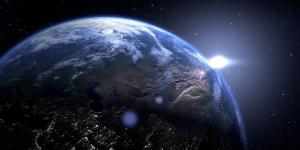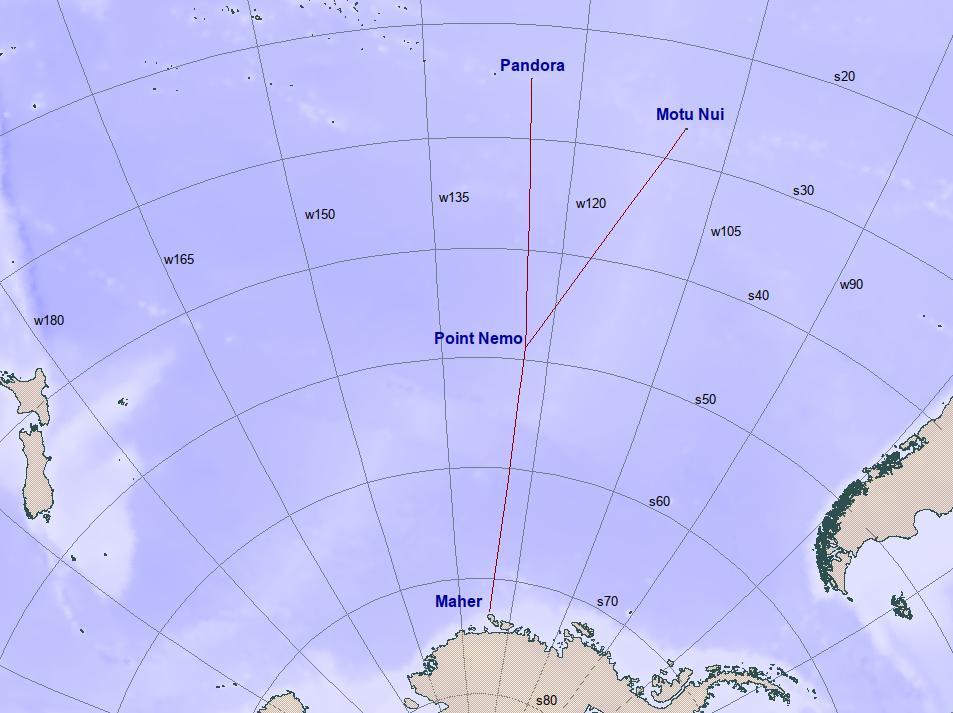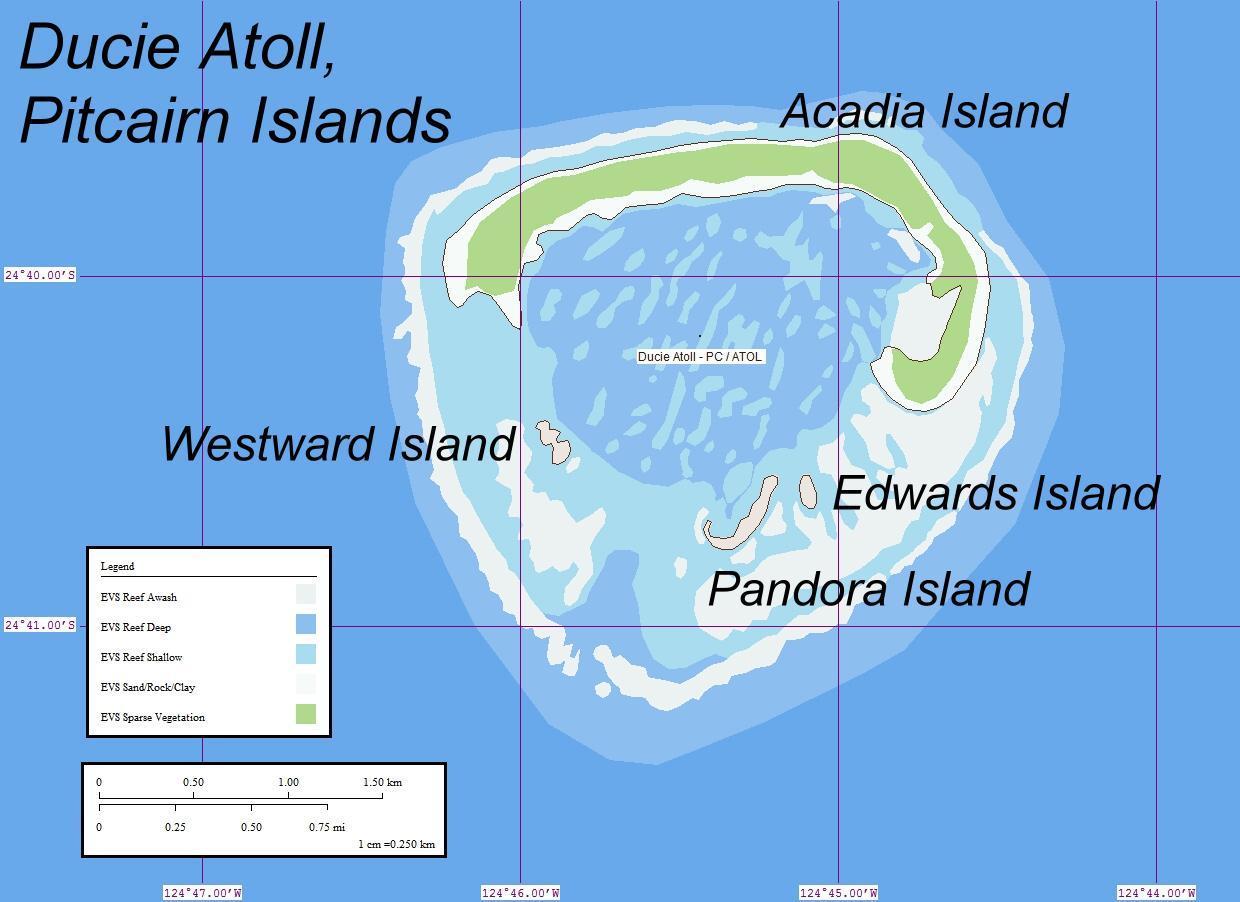What is the Point Nemo? - The Most Remote Spot on Earth


Point Nemo, also known as the Pacific Pole of Inaccessibility, stands as one of Earth's most isolated locations. Imagine a place on Earth so remote, no landmass interrupts the horizon for thousands of kilometers in any direction. In fact, its closest human visitors are astronauts aboard the International Space Station.
In this article by thedailyECO, we explore everything you need to know about Point Nemo, from its remote location to its unique characteristics and lingering mysteries.
What is Point Nemo or Pacific Pole of Inaccessibility?
Point Nemo, also known as the Oceanic Pole of Inaccessibility, is the farthest point in the ocean from any landmass. In other words, it is the most remote and isolated spot on Earth, surrounded by vast stretches of open ocean in all directions. The area around Point Nemo experiences strong currents and high winds, which further contribute to its inhospitable nature.
It was named after Captain Nemo, the fictional submarine captain from Jules Verne's novel Twenty Thousand Leagues Under the Sea. It is also referred to as the "Spacecraft Cemetery" or "Uninhabited Area of the South Pacific Ocean" because decommissioned satellites and spacecraft are often deorbited there to prevent collisions with active satellites or inhabited areas. Due to the isolation, any debris is less likely to harm land or people.
Interestingly, astronauts aboard the International Space Station (ISS), orbiting at an altitude of about 400 kilometers (250 miles), are among the closest humans to Point Nemo.
Learn about the powerful currents that shape the ocean's depths in our other article.

Where is Point Nemo?
Point Nemo is approximately 2,688 kilometers (1,670 miles) away from the nearest lands, which are:
- Ducie Island, part of the Pitcairn Islands (United Kingdom), to the north.
- Motu Nui, a small islet near Easter Island (Chile), to the northeast.
- Maher Island, off the coast of Antarctica near Siple Island and Marie Byrd Land, to the south.
The coordinates of Point Nemo are precisely 48°52.6′ South latitude and 123°23.6′ West longitude.
Did you know ocean water isn't just plain H2O? Discover the unique blend of elements that make up seawater in our next article.

What is there to see at Point Nemo?
As mentioned earlier, Point Nemo is home to the spacecraft graveyard or Uninhabited Area of the South Pacific, where space debris such as fragments of satellites and other space elements is discarded.
It is estimated that between 1971 and 2016, more than 300 spacecraft have fallen here, including the first "Mir" Space Station of the former Soviet Union. Being such a remote place, the chances of causing material damage, affecting ecosystems, or harming human beings are almost zero.
In fact, scientists believe that this debris does not have a significant impact on the ocean, since there is little marine life in that region and the material that makes up these space elements is not toxic. However, the ocean is not a landfill, and researchers are working on new space technologies that allow these objects to disintegrate upon entering the atmosphere.
Are you allowed to go to Point Nemo?
It's technically possible to go to Point Nemo, but it's incredibly difficult and not something most people would attempt. Reaching Point Nemo requires a long and expensive journey by boat. Specialized equipment and experienced crew would be necessary to navigate the vast ocean distances.
What is the bloop?
Due to its isolation, Point Nemo has become a topic of fascination, not just for its remoteness, but also for its connection to an unsolved acoustic mystery known as The Bloop.
In 1997, the National Oceanic and Atmospheric Administration (NOAA) detected an ultra-low-frequency sound wave, later named the Bloop, using underwater microphones (hydrophones) deployed across the Pacific Ocean. The Bloop's exceptional amplitude and characteristics initially sparked speculation that it might be of biological origin, perhaps produced by a colossal marine creature.
Further investigation by NOAA scientists revealed a more likely explanation for the Bloop, suggesting it originated from a natural geophysical phenomenon. Potential sources include the shifting and fracturing of massive ice shelves surrounding Antarctica, which can cause loud cracking noises that travel through the water. Additionally, large icebergs breaking away from glaciers generate powerful sounds due to the movement and interaction of the ice with the water. Finally, earthquakes or other seismic events on the ocean floor can create low-frequency sound waves that travel long distances through the water column.
While the Bloop mystery adds a layer of intrigue to Point Nemo, its isolation also makes it a valuable location for scientific research. Due to minimal human disturbance, the area provides a relatively pristine environment for studying deep-sea ecosystems and oceanic processes.
Are there animals on Point Nemo?
Life at Point Nemo, being one of the most remote and inhospitable places in the ocean, is primarily marine and includes species adapted to the extreme conditions found there.
The region is characterized by the South Pacific Gyre and the Antarctic Circumpolar Current, which circulate and block nutrient-rich waters from reaching Point Nemo. This results in a lack of essential nutrients that are vital for supporting diverse marine life.
The lack of sunlight in the deep ocean near Point Nemo significantly impacts the food chain. Photosynthesis, the process by which phytoplankton (microscopic marine plants) capture sunlight to create energy, is restricted to the sunlit surface layers. This limits the availability of energy sources for higher trophic levels – the animals that feed on these primary producers and each other in a complex web of life.
It is also worth noting that the temperature in these deep oceanic waters is generally cold and stable, which further limits the range of species that can survive there. Additionally, the pressure at such depths is immense, creating additional challenges for life forms.
However, Point Nemo is near the southern end of the Pacific-Antarctic Ridge, where hydrothermal vents and fumaroles exist. These vents support extremophilic bacteria capable of deriving energy from the chemicals released in this harsh environment. These bacteria form the base of a unique food web, providing sustenance for larger species such as the yeti crab (Kiwa hirsuta), native to the South Pacific.
In addition, some species of cephalopods, like squid and octopuses, as well as deep-sea fish and jellyfish, can occasionally be found swimming through these waters.
Delve into the bathypelagic zone, a mysterious realm teeming with life, in our next article.
If you want to read similar articles to What is the Point Nemo? - The Most Remote Spot on Earth, we recommend you visit our Facts about Earth and the universe category.
- Rodríguez H. (2017). “Without land in sight at the edge of the ocean: Point Nemo.” National geographic. Available at: https://www.nationalgeographic.com.es/ciencia/actualidad/sin-tierra-vista-los-confines-del-oceano-punto-nemo_11550







